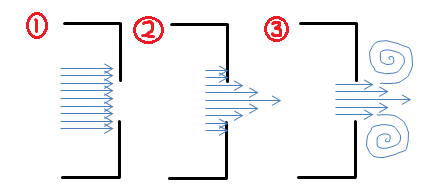| Tick-tock, tick-tock |
Piezoelectricity In Detail
This is all a very nice description of what happens, but what is the mechanism that actually causes the quartz to deform when a current is passed through? When an asymmetrical crystal is subject to mechanical stress, there is a change in the overall polarisation and dipole density of the crystal. This is actually quite similar to how capacitors work, which I have currently been studying about in physics. Any spatially separated charge, such as in a dielectric in a capacitor will result in an electric field, therefore an electric potential. In a piezoelectric device, mechanical stress, instead of an externally applied voltage is what causes this charge separation in the individual atoms of the material. When an AC current is applied, the crystal will mechanically resonant and the frequency of the resonance is determined by the physical dimensions of the material, the "cut angle" with respect to the crystalline axis of the original crystal and the ambient temperature.
Why use Quartz?
Many materials exhibit piezoelectric properties, but why was is quartz specifically chosen to be used inside millions of watches today Well it is incredibly abundant in the Earth's crust and apart from its piezoelectric properties, it also has many other attractive properties that make it ideal for use in a wrist watch. The accuracy of a quartz watch is due to its high mechanical and chemical stability. As mentioned above, changes in ambient temperature can change the frequency of the resonance, however, quartz actually has a low temperature coefficient that means that is relatively little change of physical property when the temperature changes. Quartz also has a high Q a resonance which basically means how under damped the oscillator is - A higher Q factor means that there is a lower rate of loss of energy relative to the stored energy in the oscillator and oscillations die out more slowly. Since quartz is also incredibly hard and relatively inert, it you can rely on the crystal not faulting during the lifetime of the watch.
Measuring Time
So now that we understand why the quartz was chosen and why it vibrates, how do our wrist watches count seconds and tell us the right time? The quartz crystal is cut by a laser into a 3mm tiny fork shape which means that the current from the battery makes it vibrate at 32768hz +/- 0.06hz. This specific number is chosen as it is exactly 215 hz (oscillations per second), meaning some simple circuitry can easily use this to determine the time interval between each second. This is also why there are regular pulses per second with the second hand in a quartz watch whilst a mechanical watch moves continuously. Then it's all the simple matter of gears in the correct ratio to move the minute and hour clock.
Conclusion
Once owning a horological device was one of prestige and privilege, but since the perfect piezoelectric properties of quartz crystals were first ulitised in a wrist watch in the 1960s, the price of watches have dropped to the point of disposability. They are incredibly accurate to within 5 seconds/month, more accurate to an order of magnitude when compared to mechanical watches and only surpasses in long term accuracy by primary atomic stands such as Caesium and Rubidium. I believe that they have truly revolutionised the world we live in and that is ultimately what the whole point of manipulating and using these weird quirks in the natural world to improve human life is all about.
Written by Rebecca Wang


